King Khufu, or Cheops, ruled Egypt from 2589–2566 BCE and is best known for building the Great Pyramid of Giza, an unmatched architectural and spiritual achievement that stood as the tallest man-made structure for nearly 4,000 years. The son of Sneferu and Hetepheres I, Khufu expanded Egypt’s legacy of grand construction. Though his reign is seen both as divine and authoritarian, his accomplishments endure. His 4,500-year-old Solar Boat, meant to sail him into the afterlife, and the continued work of his successors, Djedefre and Khafre, further cemented his legacy. Despite the mystery surrounding his remains, Khufu’s impact lives on through the monumental symbols he left behind.
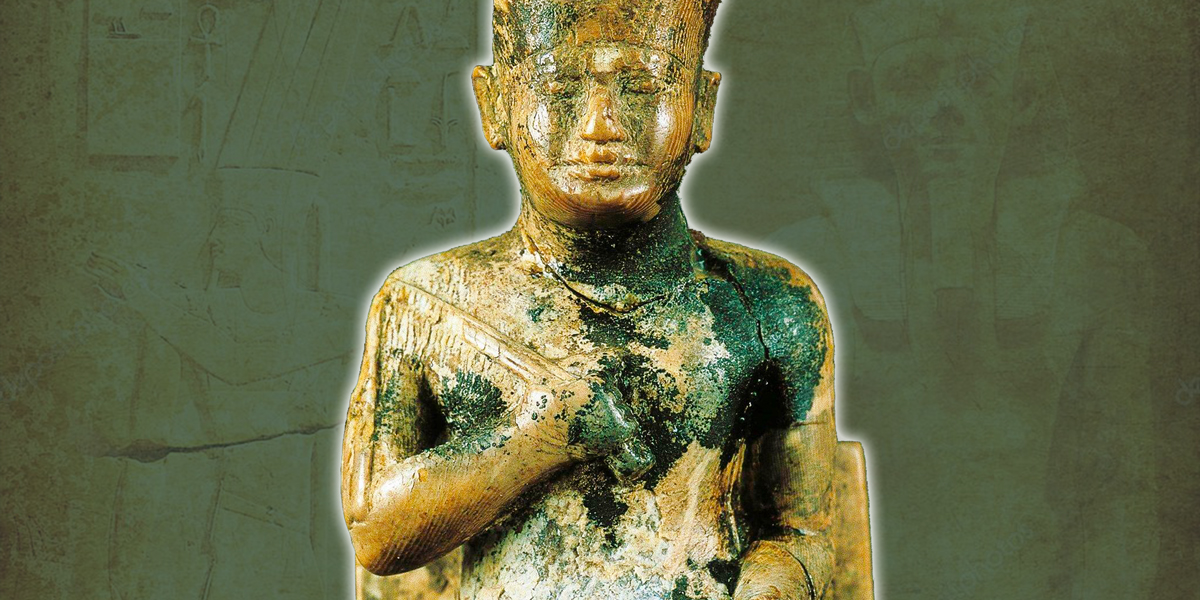
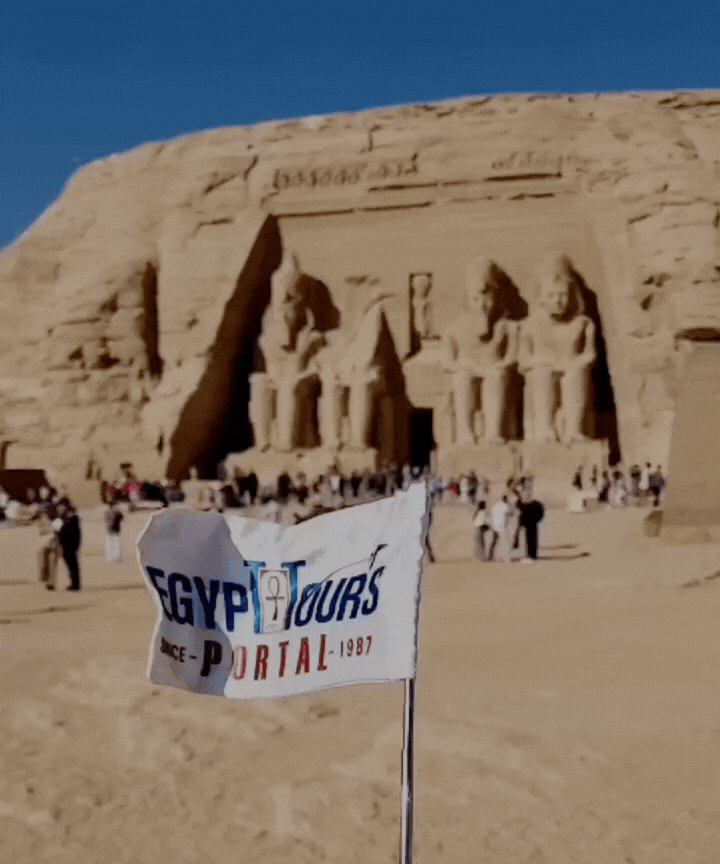
King Khufu was a great man with an even greater vision that began a chain reaction of a unique mindset to hunt for immortality. He was one of the few grand rulers of Egypt who was able to build something that lasted and still acts as a source of inspiration for thousands of years. When he constructed the Great Pyramid of Giza, everything changed as it was seen that there is no greater symbol to prove your success than coming up with a colossal monument that can tell your own story and achievements. His heritage is solidified in a series of ethereal structures and rare artifacts that carry huge meaning.
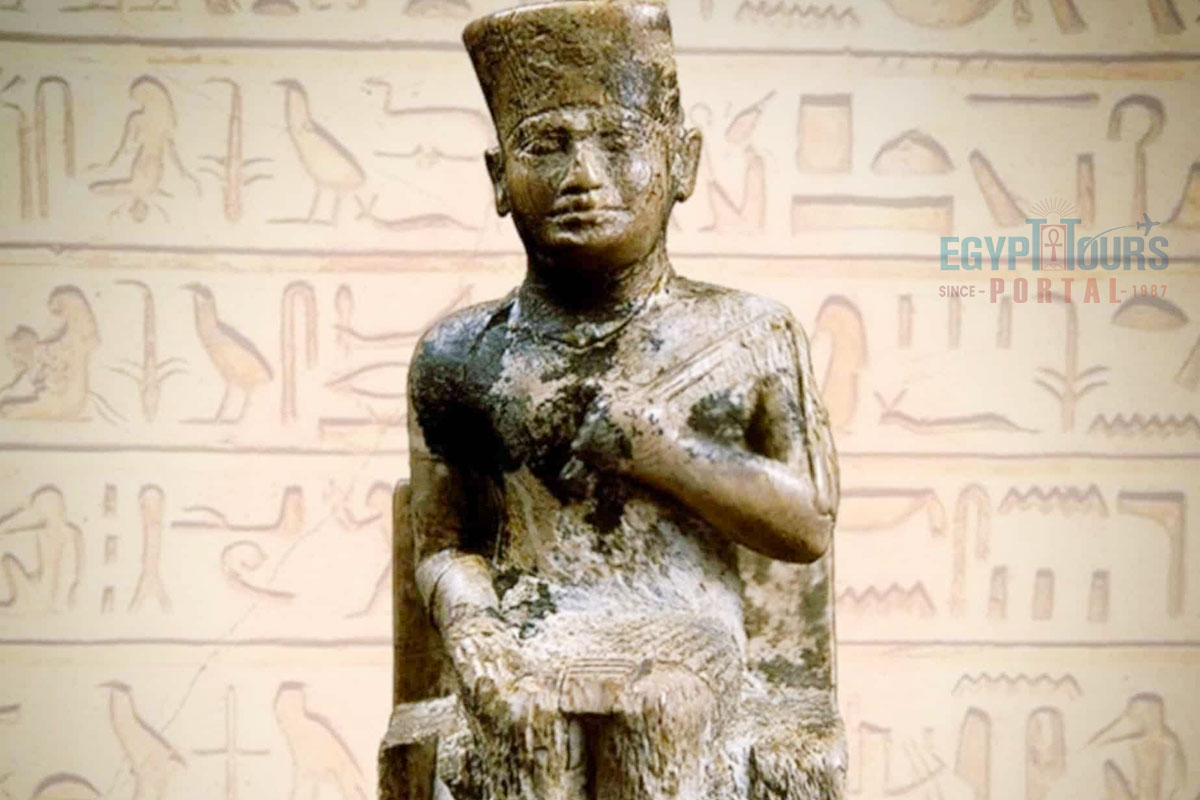
King Khufu is considered one of the most important kings who ruled Egypt during the ancient Egyptian period. He ruled Egypt from 2589 B.C to 2566 B.C during the old kingdom of Egypt (2686-2150 BC). He was the son of King Seneferu and Queen Hetepheres, and succeeded his father on the throne of Egypt and became the second king of the 4th dynasty. He married two queens by the name of Merities & Henutsen and had nine sons and fifteen daughters.

King Khufu was known in Greek as King Cheops, who is regarded as one of the most important rulers in ancient Egypt history as he was responsible for creating the Great Pyramid of Giza, one of the seven wonders of the world, and the true motto of ancient Egypt. Khufu was born around 2609 BCE and ascended to the throne in his twenties after Sneferu's death. Khufu likely died around 2566 BCE, after a reign of approximately 27 years.
His death marked a significant point in Egyptian history, as his sons Djedefra and Khafre succeeded him. Djedefra is believed to have built a pyramid at Abu Rawash, though much of it is now destroyed, and Khafre is best known for building the second pyramid at Giza and the Great Sphinx.
Khufu had several wives, including Meritites I (his principal wife) and Henutsen (his second wife). He fathered numerous children, including prominent sons like Kawab, Djedefra, Khafre, and Djedefhor, as well as several daughters. His family played key roles in the subsequent history of the Fourth Dynasty, as his son Djedefra succeeded him and his other son Khafre likely followed after Djedefra’s reign.
His full name was Khnum-Khufu, which means “Khnum Protects Me.” Khnum was the ancient Egyptian ram-headed deity of procreation, water, and fertility. While Khufu’s body has never been found, his mortuary complex and pyramid stand as testaments to his reign. King Khufu "Cheops" has no status at all except for a small statue 7.5 c.m. displayed at the Egyptian museum, which was later moved to the Grand Egyptian museum, which is made out of ivory that was discovered in Abydos city.
Discover the incredible rulers of the ancient Egyptian civilization
Read More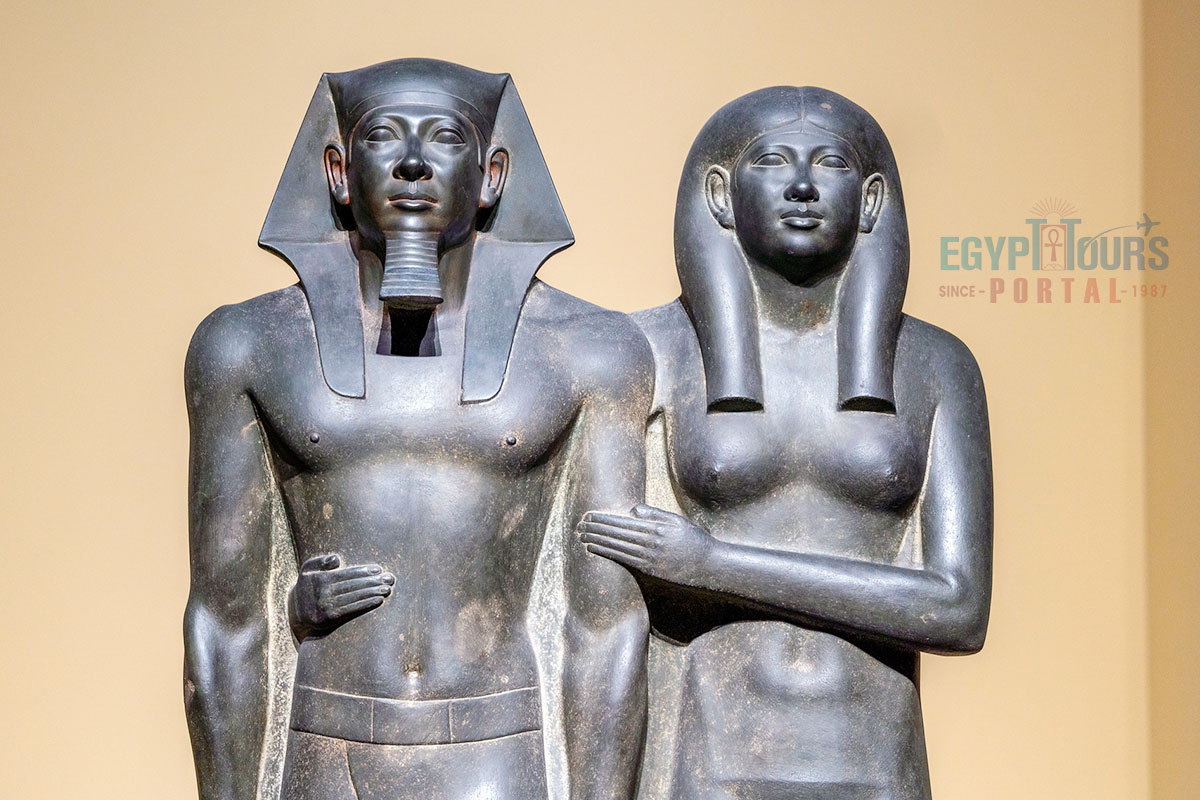
Khufu, which means “He Protects Me", also known as Cheops, was the second pharaoh of the Fourth Dynasty of Egypt during the Old Kingdom period. His reign is dated to around 2589–2566 BCE. He is most famous for commissioning the Great Pyramid of Giza, one of the most impressive structures in human history. He is known for having a large family tree and a strong royal family that immortalizes his legacy for an infinite amount of time, which include:
Khufu was the son of Sneferu, the founder of the Fourth Dynasty. Sneferu was one of Egypt's most successful and innovative pharaohs, known for building the Bent Pyramid and the Red Pyramid at Dahshur, both precursors to Khufu’s Great Pyramid. Sneferu's accomplishments in architecture likely influenced Khufu’s monumental ambitions.
Khufu’s mother was Queen Hetepheres I, an important figure in ancient Egypt’s royal family. Her burial chamber was discovered intact near the Great Pyramid, containing an array of lavish grave goods that indicate her high status. Her remains, however, were missing, much like Khufu’s.
Khufu had several wives, a common practice for pharaohs to secure alliances and ensure a strong line of succession. His primary wives included:
Meritites I is believed to have been Khufu’s principal wife. She bore him several children, including Djedefre, one of his successors. Meritites I's tomb was discovered near Khufu’s pyramid, confirming her prominent role in his life.
Henutsen was another wife of Khufu and possibly the mother of Khafre, who succeeded Djedefre and built the second pyramid at Giza. Her tomb is also located near the Great Pyramid.
Khufu had several sons and daughters, many of whom played significant roles in Egyptian history:
Djedefre was Khufu’s eldest son and succeeded him as pharaoh, ruling for about eight years. He is believed to have started the tradition of the solar deity Ra, a shift in religious focus during his reign.
Khafre, another of Khufu’s sons, succeeded his half-brother Djedefre and built the second pyramid at Giza. Khafre is often associated with the construction of the Great Sphinx of Giza.
Khufu’s son Kawab was likely meant to succeed him but may have died before ascending to the throne. He held the title of “eldest son of the king” and married Hetepheres II, one of Khufu’s daughters.
Khufu’s daughter Hetepheres II was one of the most influential women of her time. She married her brother Kawab and, after his death, married another brother, Djedefre.
Khufu had several other sons and daughters, including Minkhaf, who may have been a high-ranking official, and Khufukhaf, who held a significant position in the royal court.
Khufu’s lineage continued through his sons, especially Djedefre and Khafre. His grandson, Menkaure, the son of Khafre, is known for building the third and smallest pyramid at Giza, further cementing the family's architectural legacy.

Everything surrounding Pharaoh Khufu, even his death and tomb, is a source of great mystery and debate due to the lack of facts and evidence. His greatness is not only reflected in the Great Pyramid of Giza but also in the lack of artifacts that make his history and identity even more of a mystery.
Khufu is presumed to have died around 2566 BCE, but the exact cause and circumstances of his death remain unknown. Despite having a long duration of his reign of around 30 years, it is possible that he died of natural causes in his old age. His death marked the end of a significant era in Egypt's history, as the largest pyramid ever constructed had just been completed during his rule, according to his own image.
Khufu's tomb was commissioned as his final resting place within his great pyramid despite their is no true evidence that suggests his mummy was ever found in the pyramid. The Great Pyramid was constructed with over 2.3 million blocks of limestone and granite and originally stood at 146.6 meters (481 feet), making it the tallest man-made structure in the world for over 3,800 years. The pyramid is considered one of the most impressive architectural feats of ancient Egypt and is the only surviving structure of the Seven Wonders of the Ancient World.
Inside the King’s Chamber of the Great Pyramid is Khufu’s red granite sarcophagus, but it was found empty when the pyramid was explored. Plus, the room is empty of any kind of carvings and mythic writings. The sarcophagus itself is slightly larger than the doorway to the chamber, leading archaeologists to believe it was placed inside during construction. There is no direct evidence of Khufu’s mummy, and many scholars believe it was stolen by tomb robbers in antiquity.

Khufu ruled Egypt during the Old Kingdom, around 2589–2566 BCE. Khufu's reign was a time of immense administrative, economic, and architectural achievement, making his period one of the most remarkable in ancient Egyptian history. His reign saw the creation of a great empire that crossed the boundaries of its limitations and made structures that still have the power to produce some of the greatest stories ever told.
Everything started with the construction of the Great Pyramid stands as the pinnacle of Old Kingdom architecture. It required a highly organized workforce, which may have included skilled laborers who worked in harmony and were paid regularly. Khufu is seen as a king who expanded the central authority of the monarchy.
The pyramid complex itself reflects a highly organized and centralized state, capable of mobilizing massive resources and labor from across Egypt. Egypt during Khufu’s reign was likely prosperous, given the scale of the projects he undertook.
The construction of the Great Pyramid would have required vast economic resources, including mining, quarrying, and transporting large stones from distant locations. Khufu maintained and reinforced the religious traditions of his predecessors, particularly the veneration of the sun god Ra, a deity who became increasingly important in the Fourth Dynasty.
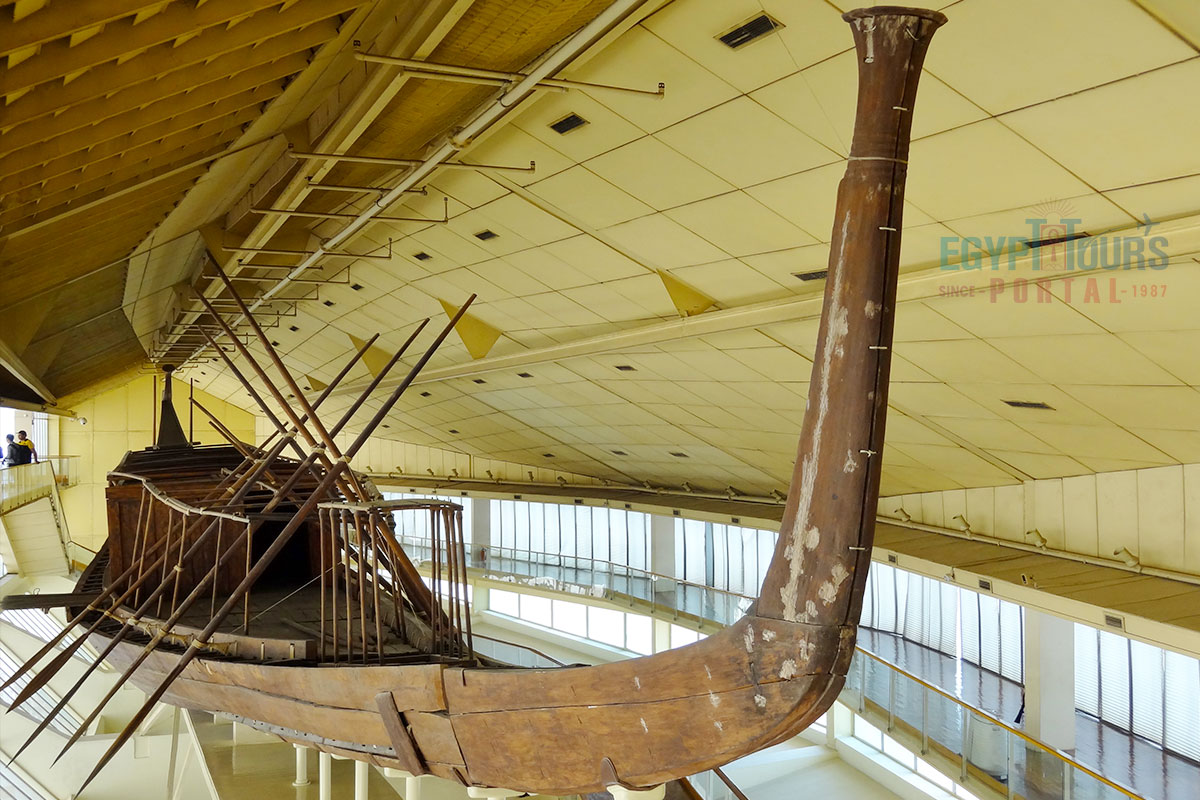
The Great Pyramid of Giza was built in 20 years between 2580 and 2560 BC, which stood 480 ft "146.7 m" tall. It was designed by Hemiunu with the usage of 2.3 million limestone each weighing 25 tons, and more than 100,000 workers in changing shifts. It remained the tallest man-made structure in the entire world for nearly 4,000 years. King Khufu believed the Great Pyramid was his stairway to heaven, where he would join his rightful place with the gods.
The Great Pyramid was the first of its kind as the sides were smooth, as opposed to having steps, plus the sides perfectly corresponded to the cardinal points of a compass. King Khufu believed the Great Pyramid was his gate to paradise as it held his tomb in the king's chamber. The accurate architectural design of the pyramid on both the exterior and interior remains a true mystery that attracts people from all over the world until our current day.
The solar boat of King Khufu is the most unique artifact not only in Egypt but in the entire world. It’s one of the oldest, largest, and best-preserved monuments in history as it dates back to more than 4.500 years. It is identified as the world’s oldest intact ship, which has been described as “a masterpiece of woodcraft” that could sail today if put into water.
The boat is able to showcase the advanced navigation & craftsmanship skills, and technology of the era. The purpose of the boat was to sail King Khufu through the afterlife across the galaxy all the way to heaven. The boat was one of two discovered in 1954, which was built with a flat bottom composed of several planks that were reconstructed from 1,224 pieces. It is now located at the Grand Egyptian Museum.
If you prefer to visit the Great Pyramid of King Khufu or many archaeological sites in Egypt, then you can visit our Egypt tours and choose your favorite trip to “The Land of Pharaohs“, about the greatest monuments ever created in the history of the world. Our magical Nile river cruise will deliver a very special experience across all the natural and colossal treasures of Upper Egypt during your time in this ethereal travel destination.
Private 4 Days Cairo Tour Packages 4 days Cairo Egypt tour package will offer a bles...
Tour Location: Cairo – Giza...
Stunning 5 Days Cairo and Alexandria Tour Package 5 days Cairo and Alexandria tour p...
Tour Location: Cairo/Giza/Alexandria...
Exceptional 6 Days Cairo, Luxor & Aswan Tour Package 6 days Cairo, Luxor & A...
Tour Location: Cairo/Giza/Aswan/Luxor...
Amazing 7 Days Cairo and Hurghada Holiday 7 Days Cairo & Hurghada holiday will e...
Tour Location: Cairo – Giza – Hurgh...
Khufu (also known as Cheops) was the second pharaoh of the Fourth Dynasty of ancient Egypt, ruling from around 2589 to 2566 BCE. Whether he was a "good" or "bad" pharaoh depends on the perspective taken, as ancient Egyptian historical records present Khufu in a mixed light. Khufu's reign is most famous for the construction of the Great Pyramid of Giza, which reflects his power, organizational skills, and control over vast resources.
The pyramid stands as a testament to his architectural vision and mastery, signifying that he must have been a highly capable leader with strong centralized authority. Modern scholars suggest that labor may have been more voluntary and organized as a public works project.
The lack of positive depictions in later Egyptian tradition, compared to his predecessor Sneferu, adds to his reputation as a potentially oppressive figure who pushed the entire society to its limits to create a unique structure that immortalized his name forever. The lack of information from this time period makes it very difficult to make a clear decision whether he was truly a good or a bad ruler.
Khufu’s mummy has never been found. While the Great Pyramid of Giza is believed to have been built as his tomb, the king's sarcophagus inside the pyramid was found empty when it was first explored. There are theories suggesting that tomb robbers may have stolen his body in antiquity, or it was moved to a more secure location. Since no other burial site has been definitively linked to Khufu, his mummy remains one of the great mysteries of ancient Egypt.
It is highly unlikely that King Khufu's remains are still in the Great Pyramid. The pyramid's burial chamber, when discovered, contained an empty granite sarcophagus, and there were no signs of Khufu's body or funerary goods. The absence of his remains has led many scholars to believe that his mummy and treasures were likely stolen by grave robbers long ago. There is no direct evidence suggesting a hidden chamber within the pyramid where Khufu might still be interred.
There is little known about King Khufu because historical records about his life and reign are scarce. Ancient Egyptian inscriptions focus more on his achievements and building projects than on his personal deeds or military achievements. Only a handful of references to Khufu have been found, mostly on artifacts like statues, inscriptions, and papyri.
The historical records that remain, such as the Westcar Papyrus which tend to be more mythological than factual. Much of what is known about Khufu comes from sources written long after his reign, including Herodotus, who wrote over 2,000 years later, and whose accounts are often unreliable. Khufu left fewer inscriptions and monumental depictions of himself outside the Great Pyramid, contributing to the lack of detailed knowledge about his reign.
Khufu's most significant impact on Egypt came through his massive construction projects, which marked the greatest achievement in the age of golden construction, especially the Great Pyramid of Giza. His reign marked great advances in Architecture and Engineering as seen in the Great Pyramid, symbolizing a leap forward in Egypt's architectural and organizational capabilities. The planning and execution required significant advances in mathematics, engineering, and logistics.
The construction of such a large-scale monument required the mobilization of vast resources and labor. This suggests that Khufu's reign involved a strong central government capable of managing large state projects and advancing Egypt’s administrative and economic systems. His legacy helped define the image of the powerful and divine pharaoh in Egyptian culture, which in turn inspired great rulers across history.
Khufu is not known for military campaigns, and there are no significant records of battles or conquests during his reign. His legacy seems more centered around construction and administration than warfare. However, given the lack of detailed records from his time, it is possible that smaller conflicts occurred, but no major wars have been documented.
Khufu ruled over all of Egypt as the pharaoh of the Fourth Dynasty and the supreme ruler of both Upper and Lower Egypt, a title that came with religious, political, and military authority. His ability to construct the Great Pyramid of Giza, mobilizing such immense resources from across the kingdom, underscores the extent of his rule and control over the unified Egyptian state.
The entire country of Egypt deserve to be explored with its every heavenly detail but there are places that must be seen before any other such as the breathtaking Hurghada's red sea, The wonders of Cairo the pyramids of Giza, the great sphinx, the Egyptian Museum, Khan El Khalili Bazaar, the wonders of Luxor like Valley of the Kings, Karnak & Hatshepsut temple and the wonders of Aswan such as Abu Simbel temples, Philea temple, Unfinished obelisk and The Wonders of Alexandria like Qaitbat Citadel, Pompey's Pillar and Alexandria Library. Read more about the best places to visit in Egypt.
If you want to apply for a Visa On Arrival that lasts for 30 days then you should be one of the eligible countries, have a valid passport with at least 6 months remaining and pay 25$ USD in cash, as for the E-Visa for 30 day you should have a valid passport for at least 8 months, complete the online application, pay the e-visa fee then print the e-visa to later be presented to the airport border guard. You could also be one of the lucky ones who can obtain a free visa for 90 days. Read more about Egypt travel visa.
Egypt has a variety of delicious cuisines but we recommend “Ful & Ta’meya (Fava Beans and Falafel)”, Mulukhiya, “Koshary”, a traditional Egyptian pasta dish, and Kebab & Kofta, the Egyptian traditional meat dish.
The best time to travel to Egypt is during the winter from September to April as the climate becomes a little tropical accompanied by a magical atmosphere of warm weather with a winter breeze. You will be notified in the week of your trip if the Climate is unsafe and if any changes have been made.
You should pack everything you could ever need in a small bag so you could move easily between your destinations.
We have been creating the finest vacations for more than 20 years around the most majestic destinations in Egypt. Our staff consists of the best operators, guides and drivers who dedicate all of their time & effort to make you have the perfect vacation. All of our tours are customized by Travel, Financial & Time consultants to fit your every possible need during your vacation. It doesn't go without saying that your safety and comfort are our main priority and all of our resources will be directed to provide the finest atmosphere until you return home.
You will feel safe in Egypt as the current atmosphere of the country is quite peaceful after the government took powerful measures like restructuring the entire tourist police to include all the important and tourist attractions in Egypt. Read more about is it safe to travel to Egypt.
Wear whatever feels right and comfortable. It is advised to wear something light and comfortable footwear like a closed-toe shoe to sustain the terrain of Egypt. Put on sun block during your time in Egypt in the summer to protect yourself from the sun.
The best activity is by far boarding a Nile Cruise between Luxor and Aswan or Vise Versa. Witness the beauty of Egypt from a hot balloon or a plane and try all the delicious Egyptian cuisines and drinks plus shopping in old Cairo. Explore the allure and wonders of the red sea in the magical city resorts of Egypt like Hurghada and many more by diving and snorkeling in the marine life or Hurghada. Behold the mesmerizing western desert by a safari trip under the heavenly Egyptian skies.
There are a lot of public holidays in Egypt too many to count either religious or nation, the most important festivals are the holy month of Ramadan which ends with Eid Al Fitr, Christmas and new years eve. Read more about festivals & publich holidays in Egypt.
Egypt is considered to be one of the most liberal Islamic countries but it has become a little bit conservative in the last couple of decades so it is advised to avoid showing your chest, shoulders or legs below the knees.
Arabic is the official language and Most Egyptians, who live in the cities, speak or understand English or at least some English words or phrases. Fewer Egyptians can speak French, Italian, Spanish, and German. Professional tour guides, who work in the tourism sector, are equipped to handle visitors who cannot speak Arabic and they will speak enough English and other languages to fulfill the needs of all our clients.
The fastest way is a car, of course, a taxi. If you are in Cairo ride a white taxi to move faster or you could board the fastest way of transportation in Egypt metro if the roads are in rush hour.
The temperature in Egypt ranges from 37c to 14 c. Summer in Egypt is somehow hot but sometimes it becomes cold at night and winter is cool and mild. The average of low temperatures vary from 9.5 °C in the wintertime to 23 °C in the summertime and the average high temperatures vary from 17 °C in the wintertime to 32 °C in the summertime. The temperature is moderate all along the coasts.
It is the home of everything a traveler might be looking for from amazing historical sites dating to more than 4000 years to enchanting city resorts & beaches. You will live the vacation you deserve as Egypt has everything you could possibly imagine.









